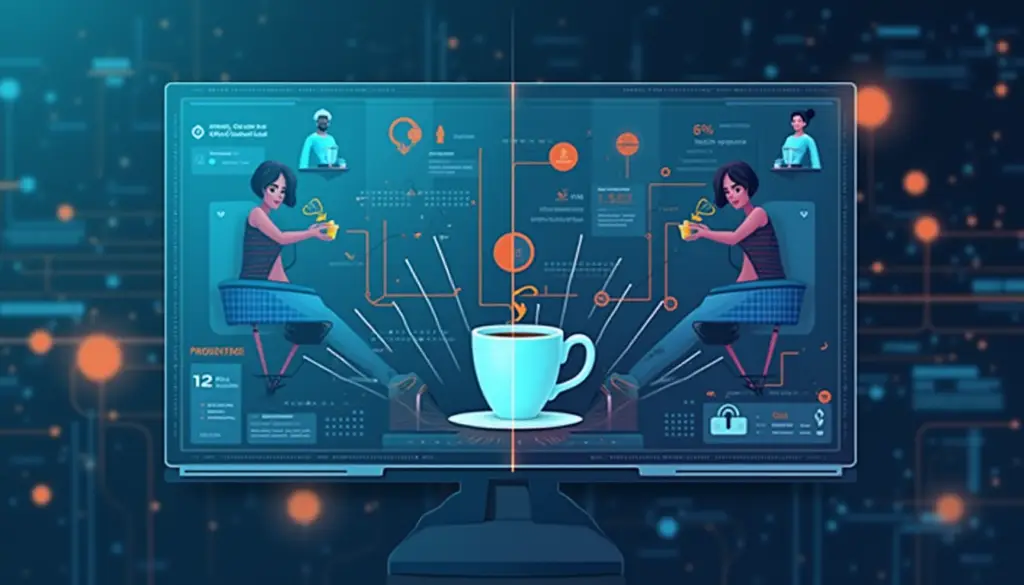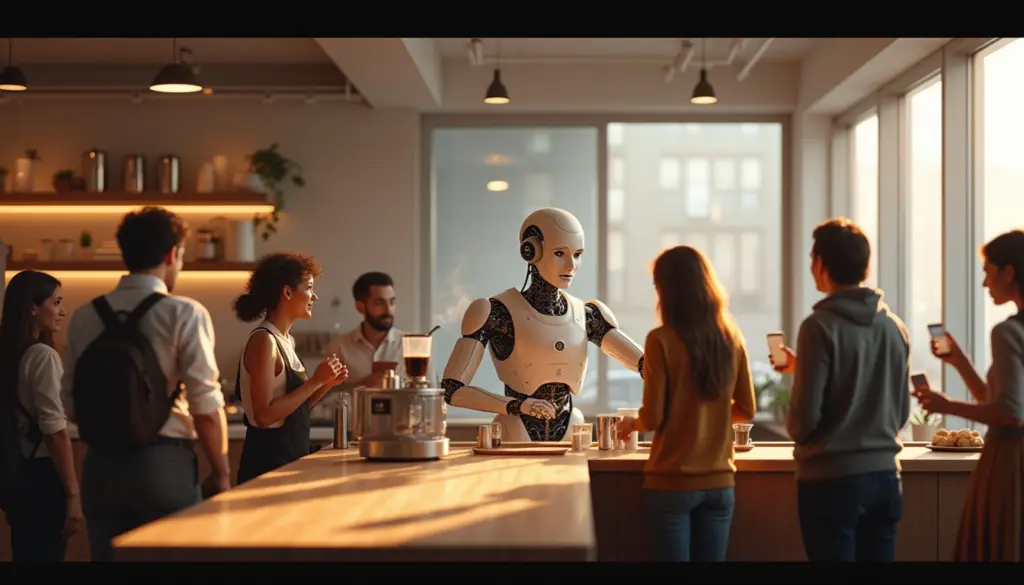A landmark 2018 study by MIT researchers Joy Buolamwini and Timnit Gebru revealed that major commercial facial recognition systems had error rates of up to 34.7% for darker-skinned women compared to just 0.8% for lighter-skinned men. This stark 43-fold disparity highlights how social bias can become encoded in AI systems with real-world consequences. Artificial intelligence systems now shape our daily experiences in ways both visible and invisible. These systems influence which news we read, what products we buy, and even who gets hired for jobs. However, AI systems often reflect and sometimes amplify the social biases present in our society. This challenge sits at the intersection of technology design and ethical responsibility.
Understanding Social Bias in AI Systems

Social bias in AI refers to the systematic errors in algorithmic outputs that create unfair advantages or disadvantages for specific social groups. These biases don’t simply appear from nowhere—they originate from human decisions, historical data patterns, and societal inequalities that become encoded in AI systems.
Think of AI as a barista at your favorite coffee shop. The barista doesn’t create the coffee beans but rather processes them into the drink you receive. Similarly, AI doesn’t create social biases but processes data that already contains these biases. Just as a barista follows certain recipes and techniques, AI follows algorithms and patterns learned from training data.
For example, a study from Stanford University found that image recognition systems developed higher error rates for darker-skinned individuals, particularly women. This happened not because the AI was programmed to discriminate, but because the “beans” it was working with—the training data—contained fewer examples of these groups, resulting in less accurate “brews” for underrepresented populations.
How AI Reinforces Social Bias

Social bias gets reinforced in AI systems through several mechanisms. First, historical data often contains patterns of discrimination and inequality. When AI learns from this data, it can perpetuate and even amplify these patterns. This is similar to how a coffee shop might keep serving the same drinks day after day based on previous orders, never exploring new possibilities.
For instance, Amazon developed an AI recruiting tool that showed bias against women. The system was trained on resumes submitted over a 10-year period, during which the tech industry heavily favored male candidates. As a result, the AI learned to penalize resumes that included terms associated with women, such as “women’s chess club captain” or graduates of women’s colleges. After discovering this bias, Amazon abandoned the tool.
Another mechanism is what researchers call “feedback loops.” When AI systems make biased decisions that affect real-world outcomes, those outcomes generate new data that reinforces the original bias. In our coffee shop metaphor, this is like a barista who consistently makes a drink too sweet, which then attracts customers who prefer sweeter drinks, further convincing the barista that all customers want sweeter drinks.
The Impact of in AI Applications
The consequences of social bias in AI extend across numerous domains. In employment, algorithms may screen out qualified candidates from underrepresented groups. A report by the Brookings Institution found that hiring algorithms often favor candidates who match historical patterns of successful employees, which can disadvantage women and minorities in fields where they’ve been historically underrepresented.
Facial recognition technology has shown alarming rates of social bias. Research by MIT and Stanford found that commercial facial recognition systems had error rates of up to 34.7% for darker-skinned women compared to just 0.8% for lighter-skinned men. These disparities can have serious consequences when such systems are used in law enforcement or security applications.
In healthcare, AI diagnostic tools trained predominantly on data from certain demographic groups may perform less effectively for others. For example, dermatology AI trained mostly on images of light skin may miss critical signs of skin cancer in patients with darker skin tones. This is like a barista who only knows how to make drinks that suit one type of customer’s taste preferences.
Strategies for Mitigating in AI
Just as a coffee shop might diversify its menu to serve a broader customer base, AI developers can take steps to reduce social bias in their systems. One fundamental approach is ensuring diversity in training data. For instance, researchers at the MIT Media Lab developed the “Inclusive Images Dataset” specifically to address biases in computer vision models by including more diverse representations.
Technical solutions include fairness constraints and bias mitigation algorithms. Companies like IBM have developed tools that detect and reduce bias in AI systems before deployment. Their AI Fairness 360 toolkitprovides algorithms to help data scientists examine, report, and mitigate discrimination in machine learning models.
Human oversight remains crucial in addressing social bias. This involves diverse teams reviewing AI outputs and decision-making processes—similar to having taste-testers from different backgrounds sample a coffee blend before it’s served to customers. Microsoft has implemented “fairness leads” within their AI development teams specifically tasked with identifying potential biases.
The Future of Social Bias Management in AI

As AI systems become more integrated into society, the approaches to managing social bias continue to evolve. Researchers are developing more sophisticated methods for detecting subtle forms of bias. For example, work at UC Berkeley has focused on creating “counterfactual fairness” measures that ask how an AI’s decision would change if a person’s protected attributes (like race or gender) were different.
On the regulatory front, governments are beginning to address AI bias. The European Union’s proposed AI Act includes requirements for high-risk AI systems to undergo bias assessments. Meanwhile, in the United States, the Algorithmic Accountability Act aims to require companies to assess their automated systems for bias and discrimination.
The ideal future—our “perfect brew”—balances technological innovation with ethical considerations. This requires ongoing dialogue between technologists, ethicists, policymakers, and the communities affected by AI systems. Just as a master barista constantly refines techniques while respecting coffee traditions, AI developers must innovate while remaining mindful of social impact.
Practical Steps for Organizations Using AI
Organizations can take concrete steps to address social bias in their AI systems. First, implementing regular audits of AI outputs can help identify unexpected biases. These audits should examine not just technical performance but disparate impacts across different demographic groups.
Second, inclusive development practices make a significant difference. Diverse teams are more likely to spot potential biases that homogeneous groups might miss. According to McKinsey research, companies with higher gender and ethnic diversity consistently outperform less diverse competitors—suggesting that diverse teams may build better products.
Finally, organizations should establish governance frameworks that incorporate ethical considerations throughout the AI development lifecycle. This means asking questions about potential social bias from the earliest stages of project planning through deployment and monitoring. Following principles like those outlined in the IEEE Global Initiative on Ethics of Autonomous and Intelligent Systems can provide a starting point.
Conclusion
The journey toward fair and unbiased AI systems resembles the pursuit of the perfect cup of coffee—it requires quality ingredients, skilled craftsmanship, and constant refinement. As AI becomes increasingly embedded in critical decision-making processes, addressing social bias is not merely a technical challenge but an ethical imperative.
Progress in this area demands a multi-faceted approach. Technical solutions, such as algorithmic fairness techniques, must be combined with organizational practices like diverse hiring and robust governance. Meanwhile, regulatory frameworks are beginning to establish baseline requirements for AI fairness.
Yet perhaps most importantly, mitigating social bias in AI requires ongoing vigilance. Just as a coffee shop must regularly taste-test its brews to maintain quality, organizations must continuously monitor AI systems for unexpected biases that may emerge as these systems interact with the real world.
By approaching social bias as a challenge to be managed rather than a problem to be solved once and then forgotten, we can work toward Transformative Leadership in AI systems that serve everyone fairly. Through this commitment, AI can become a tool that helps create a more equitable society rather than one that reinforces existing disparities.
FAQs About Social Bias in AI
What is social bias in artificial intelligence?
Social bias in AI refers to systematic errors in algorithmic outputs that create unfair advantages or disadvantages for specific demographic groups based on characteristics such as race, gender, age, or socioeconomic status. These biases often reflect and sometimes amplify existing social inequalities.
How do AI algorithms develop social bias?
AI algorithms develop social bias primarily through biased training data, which often contains historical patterns of discrimination. Additionally, the features selected for models, the ways performance is measured, and the lack of diversity in development teams all contribute to algorithmic bias.
Which industries are most affected in AI?
While all industries using AI face social bias challenges, high-stakes domains like healthcare, criminal justice, financial services, and hiring/recruitment are particularly impacted. In these areas, biased AI decisions can significantly affect individuals’ lives and opportunities.
What techniques can detect in AI systems?
Several techniques can detect social bias, including demographic parity testing (comparing outcomes across groups), equality of opportunity measures, adversarial testing, and counterfactual fairness analyses. Tools like IBM’s AI Fairness 360 and Google’s What-If Tool provide frameworks for bias detection.
How can companies reduce in their AI applications?
Companies can reduce social bias by diversifying training data, implementing fairness metrics during development, creating diverse development teams, conducting regular bias audits, establishing clear governance frameworks, and maintaining human oversight of AI systems.
References
-
Buolamwini, J., & Gebru, T. (2018). Gender Shades: Intersectional Accuracy Disparities in Commercial Gender Classification. Proceedings of the 1st Conference on Fairness, Accountability and Transparency, 81, 77-91.
-
Crawford, K. (2021). Atlas of AI: Power, Politics, and the Planetary Costs of Artificial Intelligence. Yale University Press.
-
Caliskan, A., Bryson, J. J., & Narayanan, A. (2017). Semantics derived automatically from language corpora contain human-like biases. Science, 356(6334), 183-186.
-
Mehrabi, N., Morstatter, F., Saxena, N., Lerman, K., & Galstyan, A. (2021). A survey on bias and fairness in machine learning. ACM Computing Surveys, 54(6), 1-35.
-
West, S. M., Whittaker, M., & Crawford, K. (2019). Discriminating Systems: Gender, Race, and Power in AI. AI Now Institute.





2 Responses